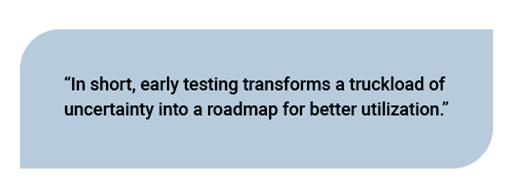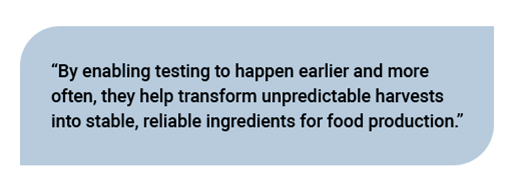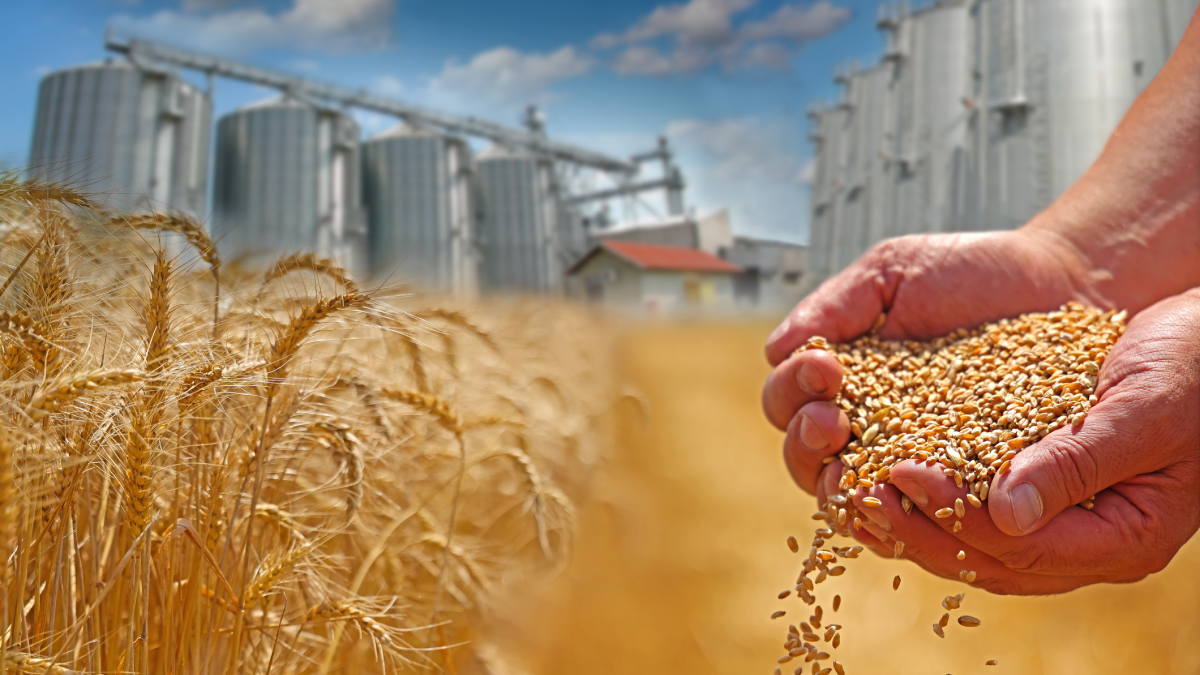Measuring What Matters: How Early Testing Shapes Food Quality in a Changing World
In today’s food supply chains, climate is the wild card. A few days of unexpected rain during harvest can trigger sprout damage in wheat. A hotter-than-usual summer can alter grain protein levels. Each shift leaves its mark on the food system, rippling through storage, milling, processing, and ultimately, the consumer experience.
For farmers, grain traders and food processors alike, this unpredictability is the new normal. The question isn’t whether climate volatility will affect grain quality, it’s how we manage it. And that’s where testing becomes not just a checkpoint, but a strategy.
Why Testing Belongs at the Start of the Chain
Quality control is often imagined as something that happens in a lab at the processing plant. But in reality, the earlier testing takes place, and the more seamlessly it can be integrated into the value chain, the more options producers have to safeguard quality. By understanding raw materials at the point of harvest or intake, food producers can make proactive decisions: which grain to store, which to divert, and how to blend lots for the best end-use.
Moisture testing, for instance, protects grain from spoilage and energy waste during drying. Over-drying grain not only impacts grain from an end use perspective, but it also results in additional overhead and reduced margins, neither of which can be accepted as competitive pressures increase along the value chain. Similarly, leveraging protein testing helps align supply with demand, ensuring bakers, brewers, and feed producers get the right materials for their needs. During harvest, Falling Number analyses flag hidden enzyme activity from sprout damage caused by often unpredictable rain – information that can prevent major disruptions later in grain and product processing.
In short, early testing transforms a truckload of uncertainty into a roadmap for better utilization.

Data as a Quality Currency
The real story isn’t just about individual measurements; it’s about the flow of information. Rapid and reliable testing turns raw data into a kind of “quality currency” that can be exchanged across the value chain. Farmers can demonstrate the value of their harvest more accurately, which not only ensures fair payment but also enables better decision making for future crop years. Grain handlers can trade with confidence. Processors can plan production with fewer surprises and maximize margins.
As these data points accumulate, they reduce the role of chance and increase the role of choice. Instead of reacting to quality failures, companies can actively design for quality, sustainability, and consistency.
Technology Making It Possible
Advances in analytical technologies are what make this vision practical. Tools like near-infrared (NIR) spectroscopy can deliver protein and moisture results in seconds, right at the point of intake. Standardized methods like the Falling Number test ensure consistency across markets and borders. Together, they allow testing to keep pace with the speed of modern supply chains.
This is where Perten’s legacy comes into play. Instruments like the Inframatic series for whole-grain analysis, the Aquamatic moisture meters, and the globally recognized Falling Number system have been designed to bring speed and trustworthiness to these critical measurements. By enabling testing to happen earlier and more often, they help transform unpredictable harvests into stable, reliable ingredients for food production.

Looking Ahead: From Quality Control to Quality Assurance
As climate uncertainty increases, food producers will need to move beyond reactive quality control and embrace proactive quality assurance. That means embedding rapid testing as a core practice, not just at the lab bench but in fields, silos, and intake points.
The companies that succeed won’t be those that just avoid variability. They’ll be the ones that turn variability into data, and data into decisions. And those decisions, made early and confidently, will ripple outward: less waste, more efficient use of resources, and food products that meet consumer expectations even when the weather doesn’t cooperate. Quality doesn’t happen by accident. It’s measured, managed, and assured—starting at the very first step of the value chain. The earlier we test, the stronger our food systems become.

